Andreas Rosboch's Blog, page 47
November 13, 2011
Quicksilver – Neal Stephenson
 This is the prequel to Cryptonomicon, although they are only vaguely related. The story focuses (as far as I can tell from the first hundred and fifty pages) on the heated debate between Newton and Leibniz on the nature of calculus. Or rather, on the notation that should be used to explain it. You don't have to be interested in mathematics (no formulae so far), but it helps. The other interesting part is how the backdrop is shaped by events following the restoration of Charles II to the throne of England and the ongoing struggle between Gathered and Established churches (Puritans and Anglicans, to put it rather simplistically), as well as the birth of the scientific method. Like Cryptonomicon, this is seemingly a collection of anecdotes loosely strung together into some sort of plot.
This is the prequel to Cryptonomicon, although they are only vaguely related. The story focuses (as far as I can tell from the first hundred and fifty pages) on the heated debate between Newton and Leibniz on the nature of calculus. Or rather, on the notation that should be used to explain it. You don't have to be interested in mathematics (no formulae so far), but it helps. The other interesting part is how the backdrop is shaped by events following the restoration of Charles II to the throne of England and the ongoing struggle between Gathered and Established churches (Puritans and Anglicans, to put it rather simplistically), as well as the birth of the scientific method. Like Cryptonomicon, this is seemingly a collection of anecdotes loosely strung together into some sort of plot.
Stephenson's style is, as always, florid and imaginative. The cool and gritty edge of Snow Crash and Cryptonomicon is still there, but it has mutated into a sort of 17th century format.
Unfortunately, I found the whole thing very dull and long-winded. This book can't seem to hold my interest. I gave up on page 241, which is just over a quarter of the way in. I don't think I will be reading the other two books in the trilogy either.
November 8, 2011
In the Beginning… Was the Command Line – Neal Stephenson
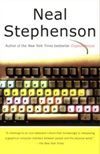 Non-fiction from Stephenson. This is the story of the PC as written by a cyberpunk author. Stephenson, not unexpectedly, turns out to be a Linux fanatic. He comes at the events from unexpected angles, making the book quite a bit of fun for the enthusiast. However if you are not a "computer person" this probably won't interest you.
Non-fiction from Stephenson. This is the story of the PC as written by a cyberpunk author. Stephenson, not unexpectedly, turns out to be a Linux fanatic. He comes at the events from unexpected angles, making the book quite a bit of fun for the enthusiast. However if you are not a "computer person" this probably won't interest you.
The Diamond Age – Neal Stephenson
November 7, 2011
Zodiac – Neal Stephenson
 This novel is about an "ecoterrorist" named Sangamon Taylor and his weird and wonderful adventures. Laugh-out-loud funny and with some fabulous jabs at large corporations. Highly recommended.
This novel is about an "ecoterrorist" named Sangamon Taylor and his weird and wonderful adventures. Laugh-out-loud funny and with some fabulous jabs at large corporations. Highly recommended.
The Big U – Neal Stephenson
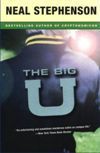 Stephenson's debut novel, about a gigantic and quite weird university. While the first third is mildly enjoyable, the rest of the novel devolves into an intricate mess of a plot. Written in an early version of Stephensons signature style, this book shows signs of the greatness to come for this author. Having said that, I advise you to avoid this one.
Stephenson's debut novel, about a gigantic and quite weird university. While the first third is mildly enjoyable, the rest of the novel devolves into an intricate mess of a plot. Written in an early version of Stephensons signature style, this book shows signs of the greatness to come for this author. Having said that, I advise you to avoid this one.
November 6, 2011
Galaxy Blues – Allen Steele
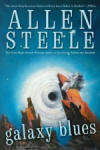 This is yet another novel set in the Coyote universe. It is about a defector from the Western Hemisphere Union who makes his way to Coyote. He is then hired/drafted for a trade mission to the aliens discovered in Spindrift.
This is yet another novel set in the Coyote universe. It is about a defector from the Western Hemisphere Union who makes his way to Coyote. He is then hired/drafted for a trade mission to the aliens discovered in Spindrift.
This is a lightweight tale of adventure and redemption. Very plain vanilla in concept. Competent but nothing more.
Spindrift – Allen Steele
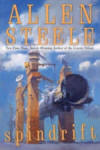 Spindrift is a spinoff of the Coyote series, dealing with first contact. The ending, where the survivors of the Galileo expedition arrive in Coyote, is already predetermined, if you will, by the epilogue of Coyote Frontier and the prologue of Spindrift itself. To arrive at this conclusion, Steele sends the Galileo and its crew on a voyage to a rogue asteroid hurtling far outside the solar system. This asteroid, dubbed Spindrift, has responded to signals from a SETI search program.
Spindrift is a spinoff of the Coyote series, dealing with first contact. The ending, where the survivors of the Galileo expedition arrive in Coyote, is already predetermined, if you will, by the epilogue of Coyote Frontier and the prologue of Spindrift itself. To arrive at this conclusion, Steele sends the Galileo and its crew on a voyage to a rogue asteroid hurtling far outside the solar system. This asteroid, dubbed Spindrift, has responded to signals from a SETI search program.
The novel is quite short, and not very much happens. What is worse, it is all very predictable. The characters are taken straight from Central Casting and the spaceship scenes are unsurprising. Even the enigmatic alien artifact is filled with stock puzzles. Setting it within the Coyote backstory is a pretty neat trick if you've read the other books. As a standalone, however, the novel is inadequate, far too predictable and sadly formulaic. The only redeeming quality is the way Steele manages to make the reader care for the characters. I genuinely wanted to know what would happen next, and thus reading the book was not a complete loss.
November 3, 2011
Bad Astronomy – Philip Plait
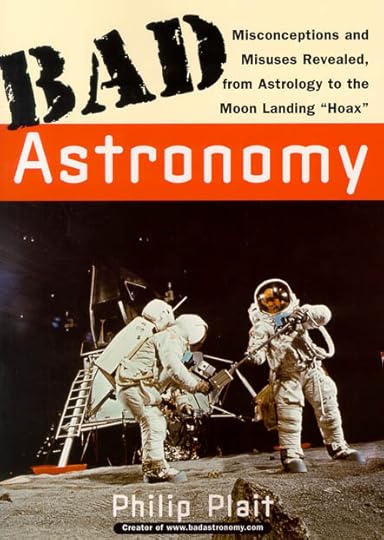 Subtitled 'Misconceptions and Misuses Revealed, from Astrology to the Moon Landing "Hoax"', this book discusses misconceptions related to astronomy. For example, various false explanations to why the sky is blue are talked about. The first part is about things like tides, eclipses. Then the book moves on to things like astrology and the purported Moon landing hoax. There is also a section on bad astronomy in films.
Subtitled 'Misconceptions and Misuses Revealed, from Astrology to the Moon Landing "Hoax"', this book discusses misconceptions related to astronomy. For example, various false explanations to why the sky is blue are talked about. The first part is about things like tides, eclipses. Then the book moves on to things like astrology and the purported Moon landing hoax. There is also a section on bad astronomy in films.
Philip Plait is an astronomer who also runs the excellent Bad Astronomy website. He has made a name for himself as a rationalist and debunker. His casual and easy style defuses any potential animosity in the text. He dislikes fraudsters and but he does not speak condescendingly about those who merely misunderstand. He also goes out of the way to explain complex physical phenomena in ways that laymen can understand.
It's a fun book even if you don't have much interest in astronomy, and I learned quite a bit reading it.
November 2, 2011
Coyote Frontier (Coyote III) – Allen Steele
 Book three in the Coyote series, this novel takes us once more to the colony planet Coyote. But there's a new twist. Earth has developed a technology for instantaneous travel between stars, meaning close contact with Earth is possible once more. Coyote seems like paradise to inhabitants of Earth wracked with overcrowding and catastrophic climate change. Will the budding Coyote Federation be able to withstand the onslaught? The original colonists have grown middle aged and responsible, but now their children rebel. It is a classic dichotomy. The old and wise versus the young and energetic. Steele plays to his strength in character creation and development, making this perhaps the most enjoyable of the Coyote books.
Book three in the Coyote series, this novel takes us once more to the colony planet Coyote. But there's a new twist. Earth has developed a technology for instantaneous travel between stars, meaning close contact with Earth is possible once more. Coyote seems like paradise to inhabitants of Earth wracked with overcrowding and catastrophic climate change. Will the budding Coyote Federation be able to withstand the onslaught? The original colonists have grown middle aged and responsible, but now their children rebel. It is a classic dichotomy. The old and wise versus the young and energetic. Steele plays to his strength in character creation and development, making this perhaps the most enjoyable of the Coyote books.
Unlike the two previous books, this one is not a collection of previously written short stories with interlude pieces. However, Steele has still kept some of that feel. The narrative changes pace, viewpoint and even style between sections. But the episodes are less self contained than before. This effect still takes some getting used to, but it works well.
The epilogue, after the action proper has been concluded and loose ends tied up, is a bit surprising. We are left dangling after a momentous first contact. Said first contact is described in Steele's novel Spindrift. Blatant plug? Perhaps. But it also reminds us that the story of the colony is still unfolding.
Coyote Rising (Coyote II) – Allen Steele
 The sequel to Coyote, picks up where the previous one left off, thus mitigating some of my annoyance with the ending of the previous book. Coyote has been invaded by the Western Hemisphere Union, a major power on Earth, and the original colonists have to fight a guerilla war against an increasingly despotic post-socialist regime. As before, the story is episodic in nature, with the whole derived from eight short stories. This has both advantages and disadvantages. While the thing feels cobbled together, the shifting viewpoints keep things interesting, and Steele is certainly a master of the short story.
The sequel to Coyote, picks up where the previous one left off, thus mitigating some of my annoyance with the ending of the previous book. Coyote has been invaded by the Western Hemisphere Union, a major power on Earth, and the original colonists have to fight a guerilla war against an increasingly despotic post-socialist regime. As before, the story is episodic in nature, with the whole derived from eight short stories. This has both advantages and disadvantages. While the thing feels cobbled together, the shifting viewpoints keep things interesting, and Steele is certainly a master of the short story.
Even more than before, though, Coyote feels like Steele's "Big Caucasian Sandbox". I don't think the author has given it conscious thought, but everyone seems to be Caucasian and with a North American outlook on life. It's really quite comical. And while Steele will sometimes make a token effort at exploring cultural differences between the the older generation of original colonists and the new one, he is mainly concerned with differences in political outlook. In the end, it's not so bad, since the theme of the story is revolution.










